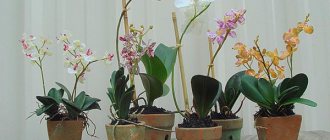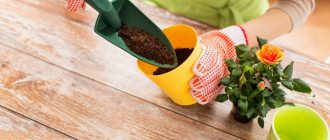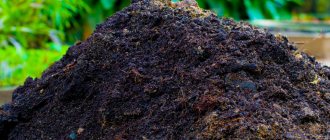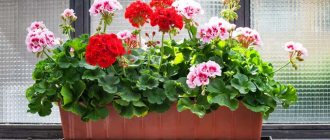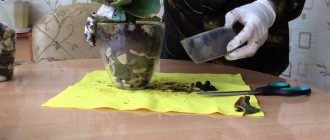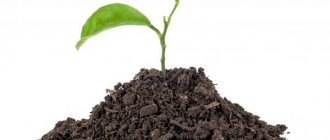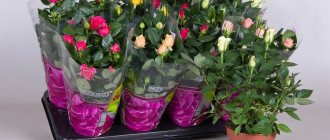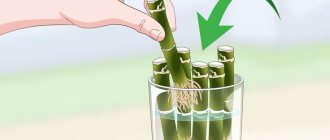- August 19, 2018
- Houseplants
- Ksenia Stepanishcheva
Many homes have geraniums. This flower is beautiful and unpretentious. Its prevalence is also associated with medicinal properties. In order for geraniums in a pot to grow well, they must be properly cared for. It is important to perform planting and transplanting correctly. The intricacies of growing a flower are described in the article.
Description
There is probably no more popular flower than geranium. It is a lush plant that is loved by many for its easy care, hardiness, and large and beautiful flowers. Geranium grows well in a pot, and the leaves have a pleasant aroma of mint and lemon.
In addition to the aesthetic factor, plants have a strong bactericidal effect. They are used in folk and traditional medicine. Flowering occurs almost all year round. Thanks to proper care, the plant will have a neat and beautiful appearance. Caring for geranium flowers at home is not difficult, you just need to remember the simple rules presented in the article.
Conditions for seasonal keeping at home
Summer and winter maintenance of geraniums at home differ. This is due to the length of daylight hours and the need to give the plant a rest before the next flowering season.
In summer, geraniums are protected from direct sunlight. In winter, choose the lightest window sill. If the apartment does not have southern windows, then they resort to the help of phytolamps, extending the daylight hours to 12–14 hours. This helps the bush maintain its shape, the shoots not to stretch out, and the leaves not to turn pale.
In summer, the air temperature in the room should be no lower than 22 degrees, and in winter – no higher than 16 degrees. The warmth will help you bloom in the summer, and the coolness in the winter will help you take a well-deserved rest and recuperate.
Note: geranium tolerates ventilation well (not to be confused with drafts!) and does not tolerate dry heat from radiators.
In summer, during the period of active flowering, water the plant more abundantly. In winter, when the geranium is dormant, moderate so as not to over-moisten the soil and cause root rot.
Root system
Geranium grows in almost every corner of the planet, it is found both in the tropics and in the mountains. This is due to the ability of the plant to adapt to different types of soil, which is ensured by the development of roots. Many types of geranium have a branched root system. There are special thickenings at the tips of the roots, which are an additional compartment for containing excess moisture. During drought, the plant takes water reserves from them, so it can support life for a long time, even if there is no regular rain.
Some types of geranium, such as bearded iris, have a different method of forming a nutritional system. Their rhizomes are compacted and located at the surface of the soil; it is stretched at a considerable distance from the plant, so it adapts to different growing conditions. This root system does not rot when overwatered and copes well with short-term drought.
There are also species whose roots form small tubers that absorb moisture. They nourish the plant when there is a lack of water, and are also reproductive organs. If the mother plant dies from harsh conditions, its tubers can lead to the appearance of a new geranium. Plants in mountainous areas have a taproot with slight branching.
The soil
When growing geraniums in a pot, errors in the use of land are allowed, but this should not be abused. The plant is suitable for loose, fertile, well-drained soil that has a slightly acidic or neutral pH. Ready-made mixtures are available in flower shops.
You can purchase a ready-made substrate for flowering plants or a universal soil, which consists of:
- vermiculite;
- washed river sand;
- peat;
- perlite.
The mixture must be mixed and checked to ensure that there are no lumps, mold or traces of insect activity. To aerate the roots, expanded clay or broken bricks are placed at the bottom of the container.
Soil for a flower
It is best to use loose soil for pelargonium , which has a high level of water and breathability.
For planting, soil with a neutral or slightly acidic pH (ranging from 5.5 to 6.5) is suitable. If the soil for the plant will be purchased in a specialized store, then the pH level will be indicated on the packaging.
But if the acidity is not indicated or the gardener will collect the soil independently from various components, then it is recommended to purchase a special kit for determining the acidity of the soil at a gardening store. It consists of test strips based on litmus paper, which can change color when the acidity level of the soil changes.
Soil composition: what does it consist of, what kind of soil to take?
For pelargonium, you should use the following soil composition:
- turf and leaf soil;
- humus;
- sand;
- peat (or sand/perlite/vermiculite).
To increase the air permeability of the soil, it is also recommended to add sphagnum moss or soil with the addition of coconut fibers. To prevent rotting of the plant roots, you can also add crushed coal to the soil .
Since young plants need lighter and more breathable soil than adult flowers with a developed root system, it is recommended to add more moss or coconut fibers to the soil to loosen it.
How to prepare?
In the soil for planting pelargonium purchased in the store, you will need to add crushed moss or humus, as well as peat to maintain moisture.
If the soil is prepared independently, then its preparation should be carried out as follows:
- A neutral or slightly acidic substrate is made up of equal parts:
- turf and leaf soil;
humus;
- peat;
- or sand/perlite/vermiculite.
- Drainage is added to the soil for pelargonium, which can be:
- sand;
perlite;
- vermiculite;
- or small pebbles.
- The soil for pelargoniums is fertilized in moderation, since well-fertilized soil promotes the growth of foliage on the plant.
The plant should be fed once every three months using purchased liquid fertilizer or self-made fertilizer (add 1 drop of iodine per 1 liter of water). In winter, no fertilizing is applied. It is also recommended to fertilize pelargonium at the beginning of its flowering with a fertilizer with a high phosphorus content.
A small amount of charcoal is also added to the soil (about 20–25 g per 1 kg of soil). It is recommended to disinfect the earthen composition before use, for example, pour boiling water on it or bake it in the oven. After the soil spilled with boiling water has cooled, it needs to be dried to a damp state and loosened.
If the soil has been heated, then it should be allowed to cool to room temperature, watered and then loosened well.
The first three components can be mixed directly into the soil, and it is better to pour pebbles onto the bottom of the pot in a layer of 1–2 cm.
Pelargonium cannot be fertilized with organic fertilizers , as they often cause rotting of the root system in the Geranium family.
Which commercial substrate is suitable?
When choosing soil for pelargonium, you should give preference to a highly specialized substrate for geranium. If it is not possible to purchase this type of soil, then you can use high-quality universal soil or soil for violets. In this case, the soil must have an optimal composition and acidity level for planting pelargonium.
On the Russian market we can recommend several names of soils suitable for pelargoniums:
- Soil for the Geraniaceae family:
- Nutritious soil “Garden of Miracles” Geranium – contains vermicompost, peat and mineral complex, cost – 38 rubles per 2.5 liters.
- ASB Greenworld soil for geraniums and balcony flowers - contains high-moor peat, lowland peat, crushed limestone, alumina, microelements, cost - 399 rubles for 18 liters.
- Nutritious soil “For geraniums and fuchsias” BIO - composed of lowland sphagnum, high sphagnum, dolomite flour, sand, agroperlite / vermiculite, complex mineral fertilizers with microelements, cost - 27 rubles for 2.5 liters.
- Universal primer:
- Soil soil "Gera Keva Bioterra" is universal - it contains a mixture of peats of varying degrees of decomposition, vermicompost, sand, humic fertilizer "FlorGumat", vermiculite/agroperlite, lime flour, cost - 45 rubles per 5 liters.
- GreenUP "Saintpaulia" soil - contains high-moor peat, low-lying peat, sand, perlite, drainage, limestone flour and complex mineral fertilizers, cost - 85 rubles per 5 liters.
- Soil for violets . “Fasco” soil for violets “Flower Happiness” - contains lowland peat, high peat, sand, dolomite flour, complex fertilizer with microelements, cost - 44 rubles for 2.5 liters.
Watering
How to care for geraniums in a pot? To do this, it is necessary to ensure proper watering. In summer, you need to water the flower abundantly, but make sure that the soil dries out between these procedures. It is easy to check the dryness of the soil: to do this, you need to plunge your finger into the ground 1-2 centimeters, the sensations allow you to verify the level of humidity.
If you still have doubts, you must follow the rule: when watering geraniums, it is preferable to under-water than over-water. This plant is native to arid Africa, so the roots and leaves accumulate moisture and consume it during drought. Constant dampness causes the roots to rot, and fungi appear in the soil, which are destructive to geraniums. By the autumn period, the number of waterings should be reduced, but the soil should not be allowed to dry out too much.
Choosing a pot
Nowadays, many containers for indoor plants are sold in stores. But not every type of pot is suitable for geraniums, since each type of pot has its pros and cons. To plant geraniums, which pot is better to choose? First you need to decide on the material of the container:
- Plastic products are durable, lightweight, and inexpensive. Due to the peculiarities of production, they are made in different shapes and colors, so these pots look better in the interior.
- Clay pots meet the flower's requirements. The moisture in them is able to evaporate faster, which protects against rotting of the roots, and the clay is able to wash harmful salts from the soil. But gradually the container turns black. Clay products have a porous structure, which provides additional aeration, which allows the roots to breathe.
Which pot is the best?
Geraniums in a pot will develop normally only if the container is chosen correctly. Plant growth and flowering depend on its size. If small containers are purchased, there will be bright and long-lasting flowering. Small pots are ideal for new shoots. With large containers, geranium will actively develop the root system, so strong green growth will be observed. It is better to choose a pot with a diameter of 12-14 cm and a height of up to 15 cm.
The roots of a flower fill containers of varying volumes, so initially it is better not to buy large containers, since replanting will need to be done in even larger containers. And it will be difficult to monitor the height of the plant. The container does not need to be changed often. At 10-12 months, a transplant is performed or when the geraniums are crowded. It is important that the new container is 2-3 cm larger than the old one.
You should not choose rectangular pots. Water will accumulate in the corners, causing ventilation to deteriorate and mold to appear. When replanting, the roots may be damaged. The container must be stable, especially if there is a cat or small children at home. A pallet is usually included in the kit, but if you need to buy it, the product must be wide and have high sides. There should be drainage holes at the bottom, and the container itself should be opaque; the roots do not like ultraviolet radiation.
Step-by-step instructions on how to make your own container for planting
From cement
The cement pot is not only original, but also very durable.
To work you need:
- cement;
- sand;
- two plastic containers of different sizes;
- perforator;
- dishes for mixing the solution;
- a few stones for weight.
Process:
- Clean containers are lubricated with oil, smaller ones on the outside, and larger ones on the inside. This will help prevent excess cement from sticking to the forms.
- A mixture of sand, cement and water is prepared, placed in a larger container, and a smaller container is inserted inside. The thickness of the walls of the future pot depends on the difference in the sizes of these vessels.
- A weight is placed inside a small container.
- This cement mortar dries in 2 days. After this, the plastic containers are cut and the finished product is freed from them.
Let's watch a video on how to make a cement pot:
When growing geraniums at home, it is important to know not only about pots, but also about fertilizing, including iodine-based, pinching, winter care, planting, and pruning.
From plaster
A plaster pot is made in the same way as a cement pot.
Required:
- gypsum;
- water;
- two plastic containers of different sizes.
Process:
- Take a larger container, pre-greased with oil, and place a smaller container inside.
- The prepared gypsum solution is poured.
- Within 2 days, the solution dries and hardens, then the plastic containers are removed.
- Drainage holes are made at the bottom. The plaster pot is ready.
Let's watch a video on how to make a pot from plaster:
Preparing for landing
Homemade geranium flowers perfectly decorate the room. To achieve this result, they must be planted correctly. During the firing of clay pots, components harmful to the color appear in the pores. Therefore, the containers must first be soaked in clean, plain water for about 1-2 hours. Water can remove toxins and fumes, eliminating odors. The neutralized container must be dried, after which it is ready for use.
If you use a clay pot where plants were previously grown, you need to thoroughly rinse it with water and a stiff brush, and then boil it with baking soda. Then you need to wash it again. New plastic pots are washed in soap and water. Often such containers contain harmful deposits that inhibit root growth.
Transfer
Geraniums are poorly replanted, so it is advisable not to change pots more than 1-2 times a year. This is usually required when:
- small space for roots;
- excess moisture;
- lack of development, flowering;
- exposure of roots.
Transplantation should be done in the spring, from February to April. It is better not to touch a flowering plant, since it spends so much energy on flowering. Instead of replanting, the top layer of soil is renewed. It is necessary to treat the pot with bleach if it was previously used for another plant. Drainage is laid at the bottom. Small stones or foam will do.
When replanting, the soil should be moistened, the pot should be turned over, and the plant should be carefully removed so as not to damage the roots. To separate the soil from the pot, you need to knock a little on the walls and bottom. The roots need to be inspected: if there is rot, then pruning is required. The flower must be lowered into the pot and the thick parts covered with soil. Then water a little, compact and add soil again.
Geraniums should be placed in a dark area for a week, and then transferred to a designated area. After 2 months, fertilizing is performed. In this way, a plant is transplanted from the street before frost. If necessary, gentle pruning is performed. To do this, the shoots are shortened, leaving 20 cm. In February-March, pruning is repeated.
Geranium propagation
The tops of geraniums remaining after pruning can be used for propagation. Cuttings take root best in the spring, but good results can also be obtained in the fall.
- Propagating geraniums by cuttings is the easiest and fastest way to replenish your flower collection. In the first summer after rooting, the young plants will bloom and retain all the properties of the mother flower.
So, how to propagate geraniums and root cuttings? After you have trimmed the geranium, select young shoots from the “clippings” whose stems have not yet become woody. If the pruning is long, then you can divide it into 2-3 shoots 10-15 cm long. Now the shoots need to be rooted in water or soil. The second method is the most reliable. Here are step-by-step instructions on how to root a pelargonium cutting with a 99% success rate.
Rooting geranium cuttings by planting in the ground
- We cut the cutting under the bud, then break off or cut off the lower two or three leaves.
- Leave the cutting alone for 5 minutes so that its base dries out a little.
- In a prepared pot with drainage holes, place a layer of drainage 1.5-2 cm thick.
- Next, fill the pot with soil about 2/3 full. What substrate is suitable? You can take ready-made universal soil for flowering indoor plants or prepare the soil mixture yourself according to the following recipe: turf soil 50%, sand 30%, peat 20%.
- Using a pencil, make a hole in the center of the soil, plant a cutting in it to a depth of 5 cm and compact it with earth.
- Water the cuttings with a solution of a fungicide, for example, Fitosporin (diluted at the rate of 15 drops per 1 liter of water, so that the composition turns out to be the color of tea leaves), then add a couple more handfuls of soil and tamp lightly.
- We put a plastic bag on the pot and leave it for 3 weeks in a place with sufficient lighting.
The first fertilizing with fertilizer can be done no earlier than 3 months after planting the cutting.
Rooting geranium cuttings in water is easier, but less effective. Here are the step-by-step instructions:
- Take about 100 ml of water (settled or filtered) into a small container;
- Dip the base of the cutting into water to a depth of no more than 1.5-2 cm. Deeper immersion is fraught with rotting;
- Place a couple of activated carbon tablets in a glass;
- Place the glass with the cutting in a place with sufficient lighting, but without direct sunlight;
- Change the water once a week. If it evaporates quickly, periodically add water to the glass. After about 10 days you will see the first roots;
- After about 45-50 days (but no more), when the roots have grown to 2.5-3 cm, transplant the cuttings into a pot with soil according to the instructions for replanting geraniums later in the article.
Trimming
If a geranium flower is planted, how to care for it at home? To do this, you need to perform pruning correctly. This should be done regardless of size and age. The procedure is needed to increase the number of inflorescences. The first stage of pruning is carried out before winter. Manipulation allows the curl to save resources for the transition to a state of rest.
The procedure should begin after the geranium has flowered: you need to cut off half the length of the flower (this gives more color to the basal flowers and reduces the chance of infection with fungi). If the sections gradually turn black, they need to be shortened. Repeated pruning is done at the end of February or at the beginning of March. This is necessary if the plant has become stretched over the winter.
Pruning must be done with a sharp blade, which is first disinfected with an alcohol solution. The cuts are made obliquely, above the leaf node. Fading flowers and dried shoots are eliminated. In this case, the bush will be attractive and small. The plant will cope with various problems, and the risk of fungus will also be reduced.
Propagation by seeds
Geranium blooms very beautifully in pots, so many housewives want to grow it. Reproduction can occur by seeds. It is advisable to do this at a time when the plant is dormant (from winter to mid-spring). The procedure requires a substrate. In this situation, turf, sand and peat (2:1:1) are used. Water cannot stagnate in it, and peat will feed the sprouted plant.
After choosing the soil, you need to prepare the seeds. They are treated with epin or zircon, and then soaked for 3 hours in water at room temperature. You can lay out soil 0.5 cm thick, and then put the seeds and cover with glass. The box is installed in a bright room where the temperature is +20 degrees. Germination takes 1.5 weeks.
After 3-4 leaves appear, you can plant it in a pot. It is necessary to separate the roots that are not very intertwined. The container should have a diameter of no more than 10 cm. Propagation by seeds is a long and labor-intensive process. And yet, if geranium flowers are planted, care at home will not require much time and effort.
How to replant geraniums - step-by-step instructions
Knowing what kind of land is needed for geraniums, they begin to transship the plant. It’s better to find out in advance how to transplant geraniums at home step by step and prepare everything you need.
Ampelous pelargonium or geranium - growing and care at home
In addition to moving an indoor flower from one pot to another, it is often transplanted into open ground in the spring and transferred back with the onset of autumn.
At home from one pot to another
Handling homemade geraniums is easy. The procedure consists of the following steps:
- Drainage is placed at the bottom of the container.
- A little earth is poured over the drainage layer.
- The flower is carefully removed from the previous pot along with the root ball.
- The plant is placed in a new pot, filling the voids with soil mixture.
After the transplant is completed, the flower is returned to the same place. The first watering is carried out no earlier than after 3-4 days.
In open ground
When geraniums are correctly moved into open ground, the perennial decorates the area with abundant flowering. To make the plant feel comfortable in the garden:
- The soil in a selected well-lit area is dug up with the addition of a compost mixture.
- Prepare a small planting hole with a depth equal to the height of the pot containing the flower.
- The plant is carefully transferred to a new place and the soil around it is compacted with your hands.
- The transplanted geranium is watered abundantly with settled water.
Additional Information! When planting cuttings in the ground, they are buried 2-3 cm. The distance between them should be at least 25 cm.
From open ground to pot in autumn
For wintering, geraniums are returned to room conditions. You should figure out how to plant geraniums in a pot in this case.
Inspecting the roots helps prevent pests from being brought into your home.
After a thorough inspection:
- The ground around the bush is watered.
- Prepare a pot with drainage and a small layer of soil.
- The flower is removed from the soil along with the root ball.
- The soil is carefully removed from the roots and inspected. At the same time, heavily overgrown, non-viable ends are cut off.
- The geranium is moved into a pot, sprinkled with soil and carefully compacted.
A flower that spent the summer outside is transferred to a well-lit place with minimal shading. It is also advisable to trim the shoots to a length of 20 cm to help the geranium get used to the new environment.
Propagation by cuttings
Geranium is easier to propagate from cuttings. Transplantation should be done in early autumn, when flowering is completed. A strong and healthy cutting 8-14 cm long is cut. The cut is made with a sharp knife slightly below the node. On the cut cuttings, you should leave 2-3 top leaves and remove the others.
The cuttings must be placed in a solution of a root stimulator. If there is no solution, there is still a chance of germination. You need to pour soil into a pot with a diameter of 10 cm, make a hole and plant a shoot. Then you need to make sure that the cuttings germinate. Irrigation is used for this. Crushed coal should be added to the water to prevent the occurrence of diseases. After the roots appear, the plant is transplanted into another pot. Care and replanting of geraniums at home are almost the same for all plant varieties. There may be only some differences.
Optimal time for the procedure
The time it takes to adapt to a new location largely depends on the time at which the flower is transplanted. Typically, transplanting geraniums at home is carried out in the spring. With increasing daylight hours, the plant begins vegetative processes, and it most easily perceives stressful changes. At the same time, some gardeners are guided by the lunar calendar, knowing about the reaction of plants to the movement of the night star.
How to replant an orchid: step-by-step instructions at home
The winter months are considered the most unfavorable time. Transshipment of the plant, carried out in March or April, will give the best results and be the most painless.
Note! Transplanting pelargonium into the garden, be it a royal, zonal or ivy-leaved plant variety, should occur at the end of spring, that is, in the second half of May.
You should move the flower back to your house or apartment before the onset of cold weather.
Is it possible to replant geraniums during flowering or in summer?
Geranium can be replanted at any time of the year, but under favorable conditions the plant blooms almost continuously throughout the summer. Is it possible to replant flowering geraniums?
During active budding, the bush spends a lot of resources and entails a protracted recovery period. As a result, the bush may not cope with stress and drop flowers. It is for this reason that it is recommended to postpone the transplant to another time.
Is a transplant necessary after purchase?
Many purchased flowers quickly die when they find themselves in a home environment. At the same time, the plant is provided with complete rest so that it can adapt to the changed external conditions, because in a short period of time the flower has gone through a number of stressful situations: replanting in the garden area, transportation, keeping in the store.
Experienced gardeners try not to replant geraniums immediately after purchase. In the first days after the appearance of a new plant, the apartment is maintained at optimal temperature and humidity.
Fertilizer
How to properly care for geraniums so that they have an attractive appearance? The plant needs to be fertilized. Organic fertilizers cannot be used. But fertilizing with potassium, nitrogen, and phosphorus in equal quantities is suitable. Potassium is needed for active flowering of geraniums. The plant also needs:
- calcium;
- zinc;
- iron;
- boron;
- copper.
For flowers, buy universal fertilizers intended for flowering plants. If the soil is dry, liquid fertilizer is not used immediately, as it burns the roots. The flower should be watered in advance. Fertilizing should be done in spring and summer. It is advisable to do this 2 times a month.
If geranium does not bloom, this may be due to untimely molding of the crown. The plant should be pruned to help it bloom better. Lack of flowering may be due to low temperatures or lack of lighting. A large pot is needed, which encourages root growth. The plant does not bloom with little feeding.
How to care
Given the southern origin of geranium, it needs to be provided with living conditions close to its natural habitat. This could mean lots of light, warmth and watering. But it's not that simple.
Watering
Geraniums need abundant and regular watering - this is a general rule. But! Only in summer and during flowering period. At this time, make sure that the earthen lump does not dry out and that the soil under the bush is moist. In winter, when the plant is resting and the temperature remains around 15 degrees, geraniums are watered once a week.
Gardeners sometimes get creative with watering their plants.
Important! Even with good drainage and proper soil, geraniums need to be loosened. This serves to prevent root rotting.
Geranium loves moist air, but not enough to take water treatments. It does not need spraying and is even harmful to varieties with pubescent leaves.
Top dressing
All fast-growing and flowering plants require not only watering, but also nutritious soil. Geranium is one of them. She needs feeding for the entire period of active growth and flowering, that is, from March to August.
There are several rules when choosing fertilizer for geraniums.
- Preference is given to potassium fertilizers - they increase the splendor of inflorescences.
- Choosing complex fertilizers without nitrogen content - it provokes the growth of green mass and distracts from flowering.
- A ban on fresh organic matter - geranium does not tolerate them.
Note: it is better to feed geranium in the evening, once every 10 or 14 days. Liquid fertilizer is not poured onto dry soil, but rather the plant is watered first.
Video: how to care for geraniums
Flowering period
The flowering time of geranium depends on the type - May-June or July-August. To prevent wilted inflorescences from draining nutrition, they are removed by carefully cutting them off.
With certain care and planting time, agronomists achieve flowering even in winter
Rest period
After abundant flowering, geraniums need rest. Her vacation period falls on the second half of autumn and winter . It is very important to comply with this so that the plant can lay flower buds for next year and has time to catch its breath.
Wintering of resting geranium takes place at a low temperature - +15 degrees. If the apartment has central heating and is very hot, the desired temperature regime is ensured by ventilation. It is enough to set the plastic window, where the holiday geranium is located, to the winter ventilation mode.
Watering at this time is reduced and fertilizing is stopped. The only thing that should not be reduced in the conditions of detention is lighting. On short winter daylight hours, it is advisable to illuminate the geranium with a lamp or choose the brightest window for it.
Getting rid of pests
If a geranium flower is planted, home care involves eliminating pests that can infect the plant. The following diseases usually appear:
- Gray rot. In this case, the leaves are removed and the bush is treated with antifungal agents.
- Root rot. Appears due to frequent watering. The flower must be replanted, removing the rotten roots.
- Whitefly. With this disease, the leaves turn yellow. You need a product like Actellik. Multiple treatments may be required.
- Powdery mildew. The leaves have a whitish coating. This is a fungal disease, treatment is performed with Topsin-M or Topaz.
- Aphid. You can notice it on the undersides of the leaves. There are many products in stores that eliminate pests.
- Rust. This is a fungal disease for which fungicides are used.
Geraniums may stop blooming. This happens when the conditions of containment are violated. For example, there is a lack of light or the soil is very moist. If you follow the rules of care, the plant will develop well, delighting its owners.
The geranium flower is a wonderful decoration for home furnishings. It is enough to properly care for it, and then it will delight you with its appearance and aroma all year round.
Ways to care for young geraniums in the cold season
Geraniums not only tolerate cool weather well, they literally look forward to it. During this period, the flowering period stops and the plant can rest a little, gaining strength for the spring. At this stage, you should properly trim the flower, feed it and shape its crown.
If we are talking about a houseplant, then you need to pay attention to the following nuances:
- In the last days of summer, as well as in September, watering is noticeably reduced. At this moment, carefully monitor the root system. If the pot is standing outside, where the temperature begins to drop to +12 degrees Celsius, then irrigate the plant with caution. When the temperature drops, pelargonium should be brought into the house.
- In order to form a bush, you need to trim off all rotten and dry leaves and pinch the crown.
- In winter, the flower pot is transferred to a cool place where the temperature fluctuates between +12..+15 degrees Celsius. Watering at this point is reduced to a minimum.
- With the arrival of spring, the first thing to do is fertilize the geranium, and then begin to plant it in the ground or propagate it.
Read How to fertilize geranium so that the leaves bloom and do not turn yellow
As for a flower growing outside, it is dug up for the winter, planted in a pot and cared for as described above.
